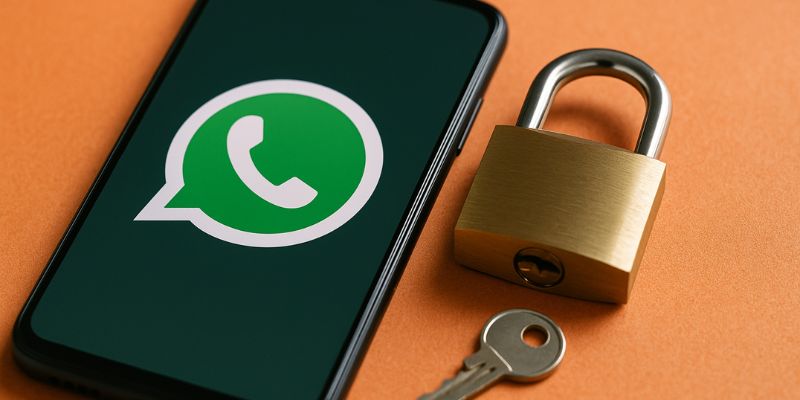Tools to Improve Privacy and Security on WhatsApp
In today’s digital age, instant messaging apps have become an integral part of our daily communication. WhatsApp, with over two billion users worldwide, is one of the most popular platforms for personal and professional interactions. However, with great popularity comes the challenge of ensuring privacy and security. This article delves into the essential tools and practices you can use to bolster your privacy and security on WhatsApp.
Why is Privacy and Security Important on WhatsApp?
Privacy and security are paramount in any communication platform. With increasing cyber threats, users must protect their information from unauthorized access and potential misuse. On WhatsApp, this includes safeguarding messages, personal data, and even your digital identity. By implementing effective tools and practices, you can significantly reduce the risk of data breaches and enhance your overall experience on the platform.
Enable Two-Step Verification
Two-Step Verification is an essential feature that adds an extra layer of security to your WhatsApp account. This feature ensures that even if your SIM card or phone is compromised, your account remains protected.
- Steps to Enable: Go to Settings > Account > Two-step verification > Enable. Follow the prompts to set a six-digit PIN and provide an email address for account recovery.
- Why It’s Important: By requiring a PIN for verification, you effectively block unauthorized access, even if someone gains control over your phone number.
Manage Privacy Settings
WhatsApp offers a range of privacy settings that allow you to control who can see your information and interact with you.
- Profile Photo, Last Seen, and Status: You can choose who sees these by selecting ‘Everyone,’ ‘My Contacts,’ or ‘Nobody’ under Settings > Account > Privacy.
- Read Receipts: Disabling this feature prevents others from knowing if you have read their messages, although it also means you won’t see theirs.
- Why These Settings Matter: Managing these settings helps protect your privacy by limiting the amount of personal information visible to others.
Use End-to-End Encryption
End-to-End Encryption is a default security feature on WhatsApp, ensuring that only you and the person you’re communicating with can read what’s sent.
- What It Means: Even WhatsApp cannot access your messages, making your conversations secure from eavesdropping.
- Verification: You can verify encryption by checking the security code in the contact’s info page, ensuring the safety of your communication.
- Importance: This feature protects your personal conversations from being intercepted by unauthorized entities.
Regular Backup and Data Management
Backing up your data and managing it properly is crucial for both security and recovery purposes.
- Cloud Backups: While convenient, these backups are not end-to-end encrypted. Consider using third-party tools to encrypt your backups before uploading them to the cloud.
- Local Backups: Regularly save encrypted backups to your device for added security.
- Data Management: Regularly review and delete unnecessary media and chats to reduce the risk of data exposure.
Be Cautious with Links and Attachments
Phishing attacks often occur through malicious links and attachments sent via WhatsApp.
- Recognize Phishing Attempts: Be wary of unsolicited messages, especially those asking for personal information or financial details.
- Verify Links: Always verify the legitimacy of links before clicking. Look for suspicious URLs or unexpected redirects.
- Attachments: Only open files from trusted contacts to prevent malware attacks.
Utilize Third-Party Security Apps
Several third-party apps can enhance your WhatsApp security by providing additional features not available in the app itself.
- App Lockers: Use these to lock WhatsApp with a password or fingerprint, adding an extra layer of security.
- Antivirus Software: Regularly scan your device for malware that could compromise your WhatsApp data.
- VPN Services: Use a VPN to encrypt your internet connection, especially on public Wi-Fi networks, to protect your data from being intercepted.
Conclusion
In conclusion, safeguarding your privacy and security on WhatsApp requires a proactive approach. By implementing the tools and practices discussed, you can significantly reduce risks and enjoy a more secure communication experience. Remember, staying informed and vigilant is key to maintaining your digital privacy and security.
Frequently Asked Questions (FAQ)
How do I enable two-step verification on WhatsApp?
Go to Settings > Account > Two-step verification and follow the prompts to set a six-digit PIN and optionally provide an email address for recovery.
What is end-to-end encryption on WhatsApp?
It’s a security feature that ensures only you and the person you’re communicating with can read messages, making them inaccessible to third parties.
Can I hide my last seen on WhatsApp?
Yes, go to Settings > Account > Privacy > Last Seen and choose ‘Everyone,’ ‘My Contacts,’ or ‘Nobody’ to control who can see this information.
Are cloud backups on WhatsApp secure?
Cloud backups are not end-to-end encrypted. Consider encrypting them with third-party tools before uploading to the cloud for added security.
How can I recognize phishing attempts on WhatsApp?
Be cautious with unsolicited messages, verify links before clicking, and avoid sharing personal or financial information with unknown contacts.
